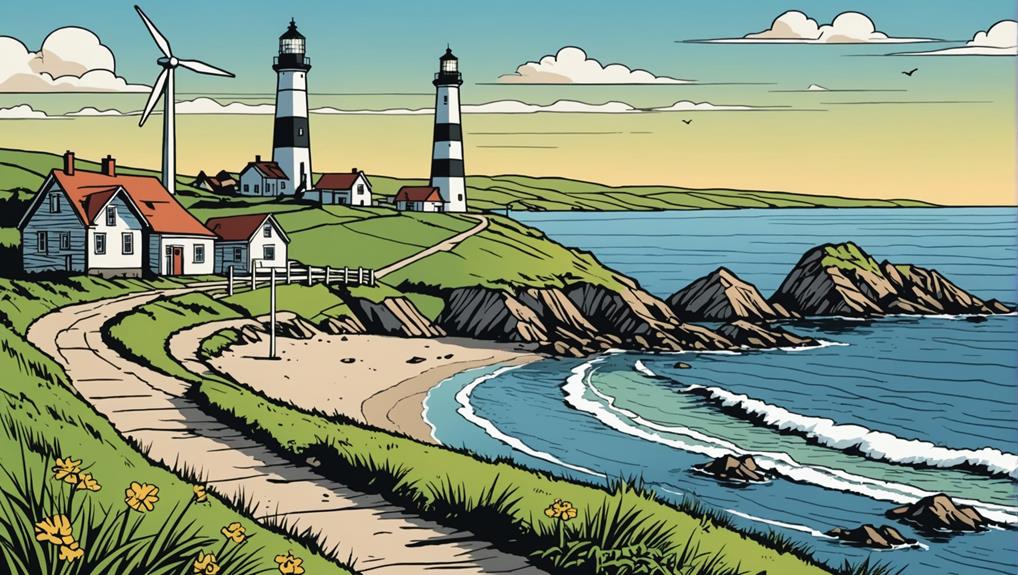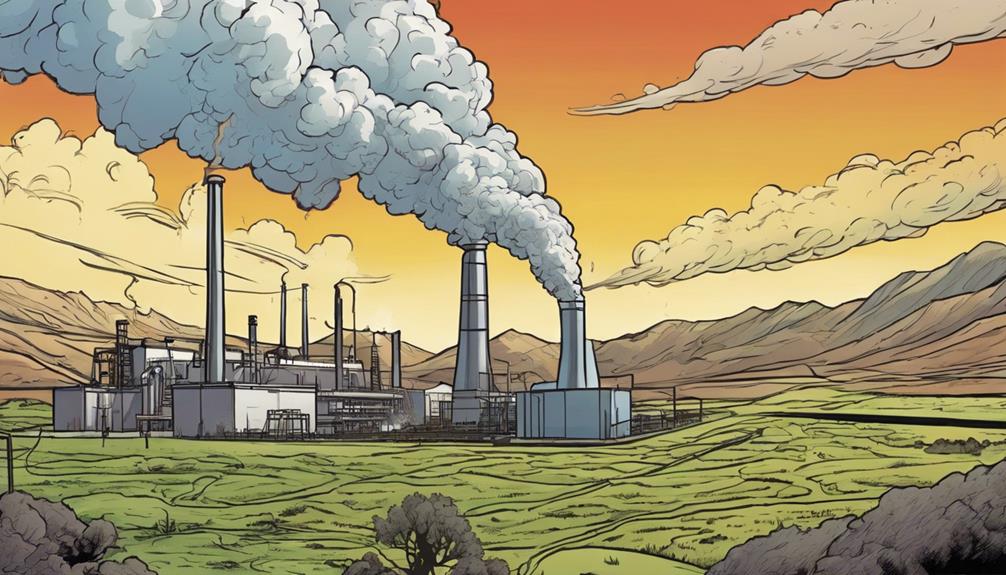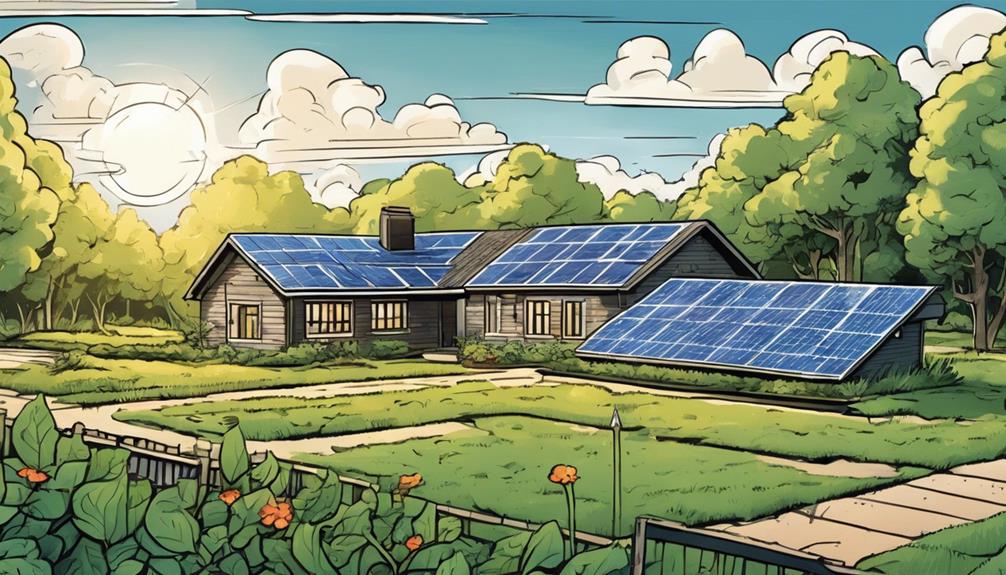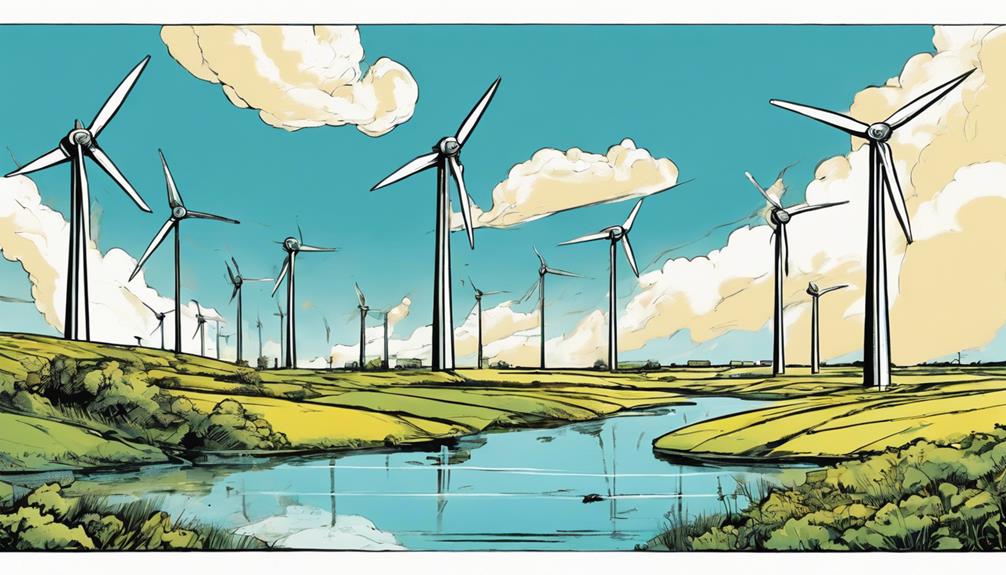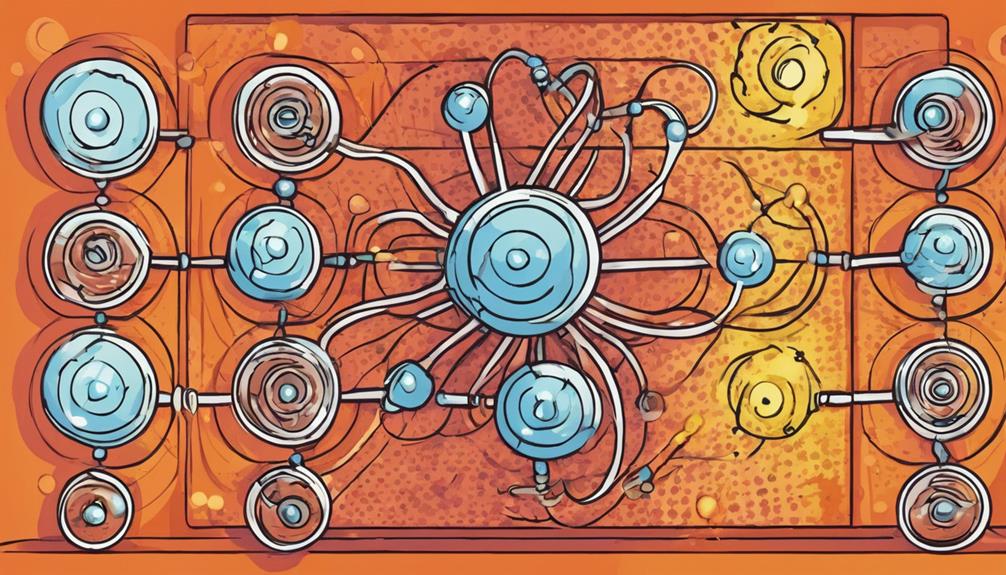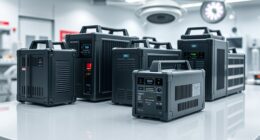To find the best spots for wind turbines, you should look at wind resource potential, existing power lines, and environmental impacts. Check wind maps and data to pinpoint ideal locations, and make sure compliance with permits and ordinances. Minimize wildlife interactions and find windy areas for installations. Consider factors like power availability and grid connections. Thinking about wildlife habitats, noise pollution, and land use is essential. Remember, these are just the basics; there's more to discover about optimizing wind turbine locations.
Key Takeaways
- Consider wind speed and consistency for optimal energy production.
- Evaluate proximity to power lines for efficient transmission.
- Assess environmental impact to minimize harm to wildlife.
- Analyze wind resource data for site selection accuracy.
- Factor in topography, grid connection, and noise pollution for location planning.
Wind Resource Potential
Assessing the wind resource potential is essential in determining the energy production capacity of a wind turbine site. Factors such as wind speed and consistency are key in evaluating the viability of a location for wind energy generation.
Detailed wind maps and data analysis are vital tools in identifying areas with optimal wind conditions for efficient electricity production. By understanding the wind resource potential of a site, you can select locations that maximize electricity output and project feasibility.
It's crucial to consider wind speed patterns over time to guarantee consistent energy generation. Choosing a site with high wind resource potential increases the likelihood of long-term success in wind energy production.
Hence, when evaluating potential locations for wind turbines, prioritizing areas with a strong wind resource potential can greatly impact the overall effectiveness and profitability of the project.
Existing Power Lines

When selecting wind turbine locations, you should consider the proximity to existing power lines. This factor plays an important role in efficiently transmitting wind energy.
Additionally, existing power lines can impact the connectivity of wind turbines to the grid.
Power Line Proximity
Optimizing wind turbine locations involves strategically situating them near existing power lines to maximize efficiency and minimize costs. By considering power line proximity, you can leverage the infrastructure already in place, reducing the need for extensive new transmission lines. This not only saves on construction costs but also minimizes energy losses during transmission.
Being close to existing power lines streamlines the process of connecting wind turbines to the grid, enhancing the overall feasibility of the project. Access to established infrastructure facilitates efficient electricity distribution, ensuring that the energy generated by the wind turbines reaches consumers effectively.
When selecting locations for wind turbines, proximity to power lines should be a key factor to optimize the operation and output of the turbines while keeping costs in check. Remember, power line proximity plays an essential role in the success of wind energy projects.
Transmission Infrastructure Analysis
Examine the current power lines near potential wind turbine sites to guarantee efficient electricity distribution. Reviewing the transmission infrastructure, specifically the proximity of existing power lines to wind turbine locations, is crucial for maximizing energy transmission and minimizing costs.
Checking data on current power lines aids in determining the feasibility of connecting wind turbines to the power grid. By analyzing transmission infrastructure, you can choose optimal wind turbine sites that are easily reachable for electricity distribution.
Considering the availability of transmission infrastructure near wind turbine sites is essential for the successful integration of wind energy into the existing power grid. This evaluation ensures that the electricity generated by wind turbines can be effectively transmitted to consumers, contributing to a more sustainable and reliable energy system.
Make informed decisions by evaluating the current power lines when identifying potential locations for wind turbines.
Impact on Grid Connectivity
Proximity to existing power lines significantly influences the effectiveness of connecting wind turbine projects to the grid. Wind turbines positioned near existing power lines benefit from easier grid connectivity, reducing the need for extensive new transmission infrastructure. Leveraging the proximity to these power lines not only minimizes costs but also mitigates environmental impacts associated with constructing additional transmission corridors.
By tapping into the existing grid infrastructure, wind turbines can swiftly deliver renewable electricity to consumers, strengthening the overall efficiency of the energy system.
Access to power lines plays a critical role in integrating wind energy into the grid seamlessly. Evaluating transmission capacity and ensuring compatibility with wind energy generation are vital steps in optimizing grid connectivity for wind turbine installations. Locations near power lines offer opportunities to enhance renewable energy integration and bolster system reliability, highlighting the importance of strategic placement for wind energy projects.
Environmental Impacts
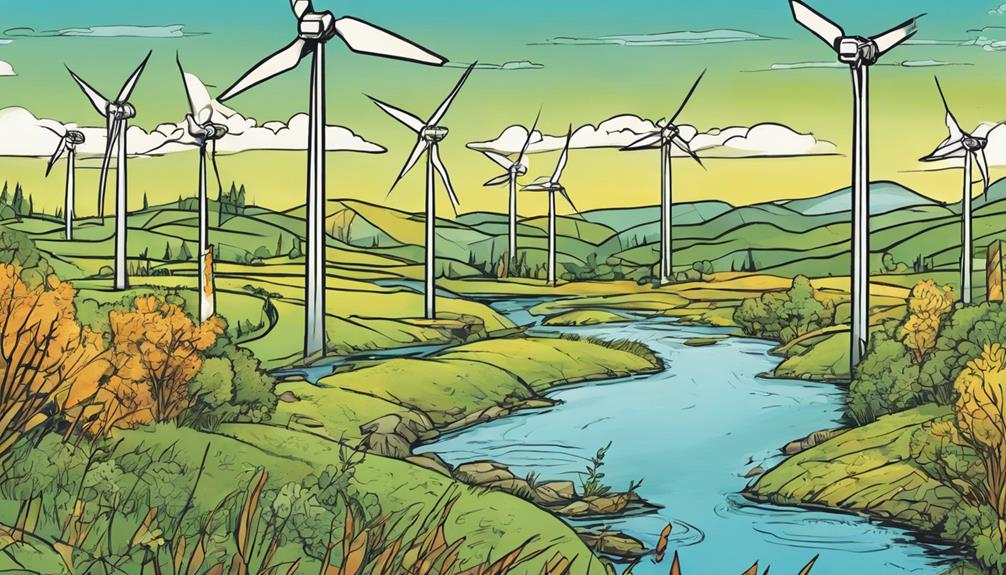
Considering environmental impacts is crucial when determining the placement of wind turbines to minimize harm to wildlife and ecosystems. Wind turbine placement must undergo thorough environmental assessments to ensure minimal disruption to sensitive habitats, migratory paths, and nesting areas.
By strategically avoiding these areas, the negative effects of habitat fragmentation can be reduced, promoting ecological conservation alongside renewable energy generation.
Environmental assessments play a critical role in identifying ideal wind turbine locations that strike a balance between sustainability and ecological preservation. Proper siting techniques, coupled with effective mitigation measures, can help mitigate potential risks to bird and bat populations near wind turbine installations.
Through strategic planning and a strong focus on environmental considerations, sustainable wind energy development can be achieved, fostering a harmonious coexistence between clean energy initiatives and wildlife conservation efforts. Such an approach is key to minimizing the adverse ecological impacts associated with wind turbine installations.
Wind Maps and Data
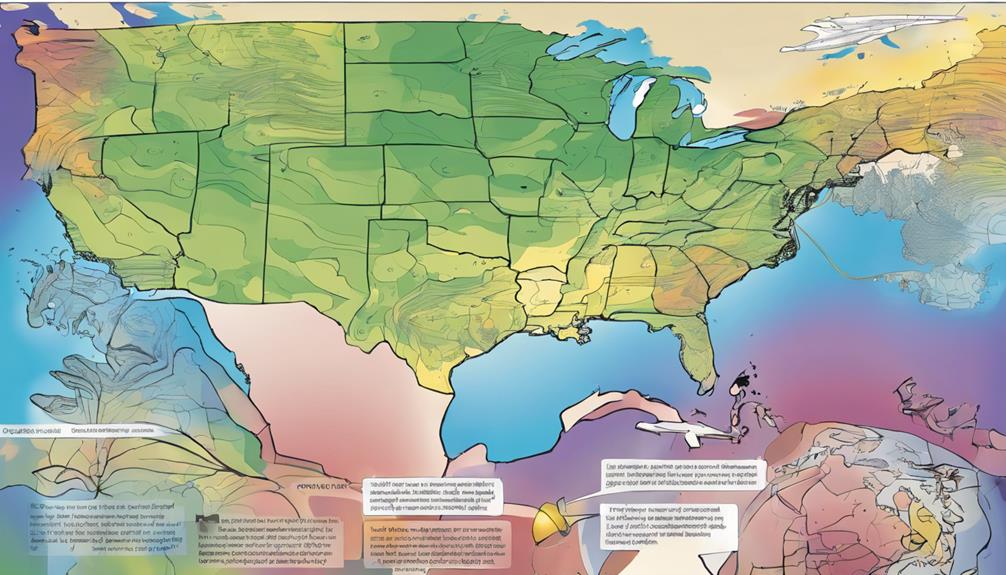
When considering wind turbine locations, you should rely on wind maps and data to assess the wind resource potential accurately.
By utilizing data analysis techniques and spatial mapping tools, you can identify the best locations for wind energy projects.
These resources provide valuable insights to make informed decisions regarding wind turbine placement.
Wind Resource Assessment
Analyzing wind maps and data is necessary for evaluating the potential energy production at specific locations through wind resource evaluation. Wind maps play a significant role in providing detailed information on wind speeds and patterns, aiding in the identification of ideal sites for wind turbine placement.
Data collected from anemometers and wind monitoring stations further enhances the accuracy of wind resource evaluation, facilitating informed decision-making regarding site selection for wind energy projects. Understanding the variability of wind resources is essential for maximizing energy output and ensuring the efficiency of wind turbines across diverse locations.
Access to up-to-date wind resource information is crucial for evaluating the feasibility and profitability of potential wind energy ventures. By utilizing wind maps and data effectively, stakeholders can optimize the performance and output of wind turbines, contributing to the success of renewable energy initiatives.
Data Analysis Techniques
Exploring various data analysis techniques for wind maps and data is essential for optimizing wind project development and site selection. Wind maps and anemometer data play a critical role in making informed decisions regarding wind project development. Accessing resource maps at different wind development scales can help identify suitable locations for wind turbines. Leveraging resources like WINDExchange can provide valuable insights for site selection, enabling better decision-making in project planning. Analyzing wind data, perhaps using SQL code, allows for data normalization, leading to more accurate site selection. Detailed wind resource information is crucial for enhancing project planning and ensuring the success of wind energy ventures.
| Data Analysis Techniques | Benefits |
|---|---|
| Wind maps and anemometer data | Informed decision-making |
| Resource maps | Identifying suitable locations |
| WINDExchange resources | Valuable insights for site selection |
| SQL code analysis | Data normalization |
| Detailed wind resource information | Enhanced project planning |
Spatial Mapping Tools
Spatial mapping tools, such as those provided by NREL, offer detailed wind speed data at various heights to assist in selecting the best locations for wind turbine placement.
These wind mapping tools utilize data from wind maps and anemometer readings to pinpoint best locations for wind turbines based on wind resource potential and environmental factors.
By analyzing this information, developers can identify windy areas suitable for wind energy development and assess the feasibility of wind farm projects.
Utilizing spatial mapping tools is essential for optimizing energy production and maximizing the output of wind turbines.
Wind maps and data provide crucial insights for selecting suitable locations, ensuring that wind energy projects are situated in areas with the highest potential for generating renewable energy efficiently.
Incorporating wind mapping tools into site selection processes can greatly enhance the success and sustainability of wind energy initiatives.
Permits and Ordinances
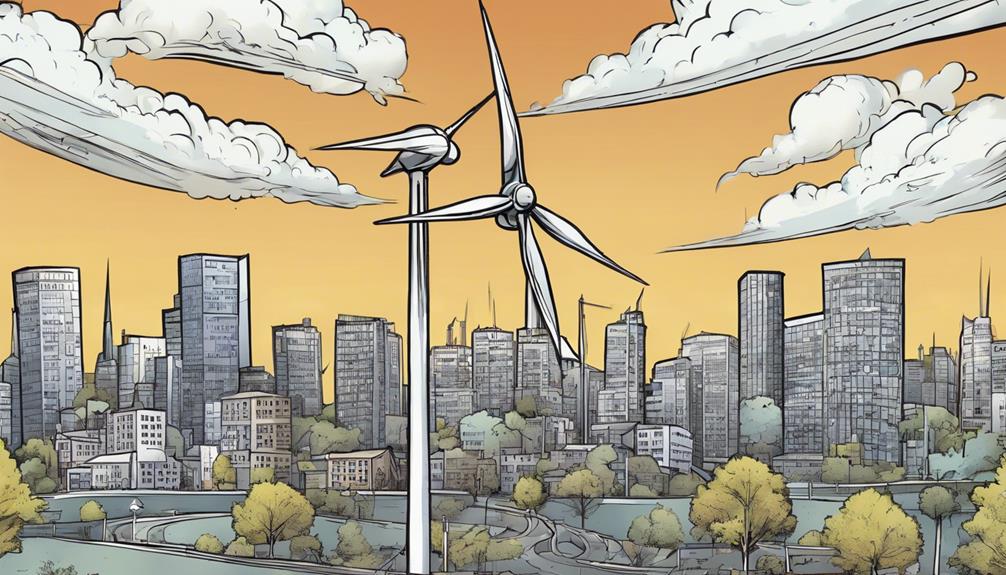
When considering wind turbine locations, obtaining the necessary permits and adhering to local ordinances is vital to guarantee compliance and minimize potential impacts. Wind energy ordinances are put in place by local governments to regulate aspects such as location, permitting processes, and construction details concerning wind farm development. These ordinances aim to address issues like noise, safety, and land use to ensure that wind projects are integrated responsibly within communities.
Additionally, wind energy permits are essential for meeting regulations and ensuring the proper siting of wind turbines. By following these permits and ordinances, negative impacts on wildlife and communities from wind energy projects can be minimized. It's important to recognize that permits and ordinances play a significant role in promoting the coexistence of wind energy and communities.
Therefore, abiding by these regulations is fundamental when selecting suitable locations for wind turbines.
Responsible Siting Goals

When considering responsible siting goals for wind turbine locations, it's important to focus on community engagement strategies and wildlife impact mitigation.
By actively involving the community and implementing measures to minimize wildlife interactions, you can guarantee that wind energy projects are developed in a socially and environmentally responsible manner.
These goals underscore the significance of balancing energy needs with environmental and community welfare.
Community Engagement Strategies
Effective community engagement strategies play a pivotal role in achieving responsible siting goals for wind turbines, fostering collaboration between energy projects and local communities. By involving the community in the decision-making process, energy projects can address concerns, build trust, and guarantee that the selected sites are appropriate. Thorough research and open dialogue are essential components of responsible wind turbine site selection.
Engaging with the public enables a better understanding of local perspectives and concerns, leading to more informed decisions. Responsible siting goals emphasize the importance of minimizing negative impacts on wildlife and people, making community engagement essential in achieving these objectives. When communities are involved early on and their input is considered, it can result in better acceptance and support for wind energy projects.
Wildlife Impact Mitigation
To minimize wildlife impacts when siting wind farms, observing wildlife behavior and developing predictive models are essential steps. By understanding how wildlife interacts with their habitats, wind farm developers can make informed decisions to mitigate potential negative effects.
Thorough research on environmental and wildlife aspects of wind energy is pivotal in guiding the placement of wind turbines to protect wildlife. Responsible wind farm siting aims to balance the need for renewable energy with the preservation of wildlife habitats.
Engaging the public thoughtfully in the wind farm siting process helps address concerns related to wildlife protection, ensuring that local communities are involved in promoting coexistence between wind energy and wildlife. Utilizing research findings to inform wind turbine placement can effectively mitigate wildlife interactions, safeguarding local wildlife populations.
Ultimately, prioritizing wildlife impact mitigation in wind farm suitability assessments is fundamental for sustainable energy development.
Wildlife Interaction Minimization
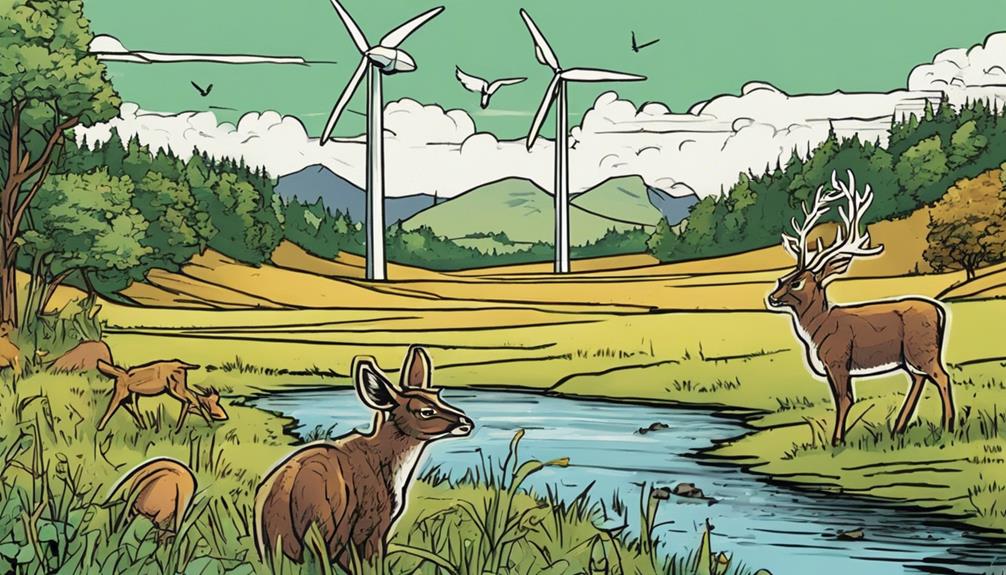
Develop predictive models to anticipate wildlife interactions with wind turbines and inform strategic siting decisions. By understanding wildlife behavior patterns, we can effectively minimize negative interactions with wind turbines. These predictive models play an essential role in guiding wind turbine placement to protect biodiversity and ecosystems.
Thorough research on environmental and wildlife aspects is necessary in ensuring that wind farms are sited in locations where wildlife impacts are minimized. When considering wind turbine placement, it's crucial to prioritize wildlife protection through informed decision-making. The goal is to develop wind energy projects that coexist harmoniously with nature, minimizing any potential disruptions to wildlife habitats.
Windy Areas Identification
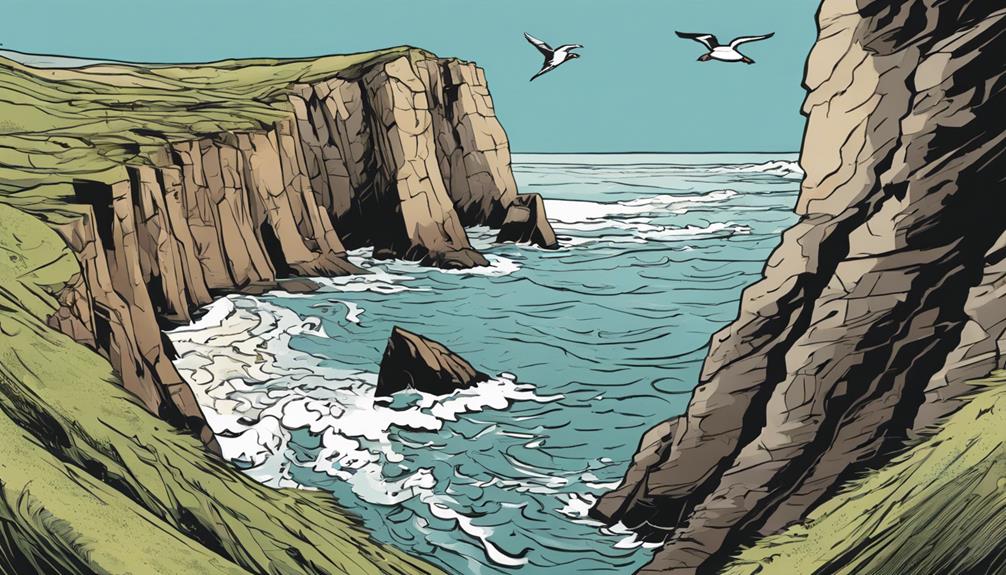
Identify best spots for wind turbines by examining wind energy maps and anemometer data. When determining windy areas for ideal wind turbine placement, utilizing wind energy maps and anemometer data is essential.
Here are some key points to keep in mind:
- Wind energy maps provide a detailed overview of wind resources in specific regions, assisting in the selection of prime spots for wind farms.
- Anemometer data offers precise measurements of wind speeds at potential turbine sites, enabling accurate assessments of energy production capabilities.
- Utilizing resources like WINDExchange can offer valuable insights into wind energy potential and help in pinpointing suitable spots for maximizing energy output.
Wind Energy Ordinances
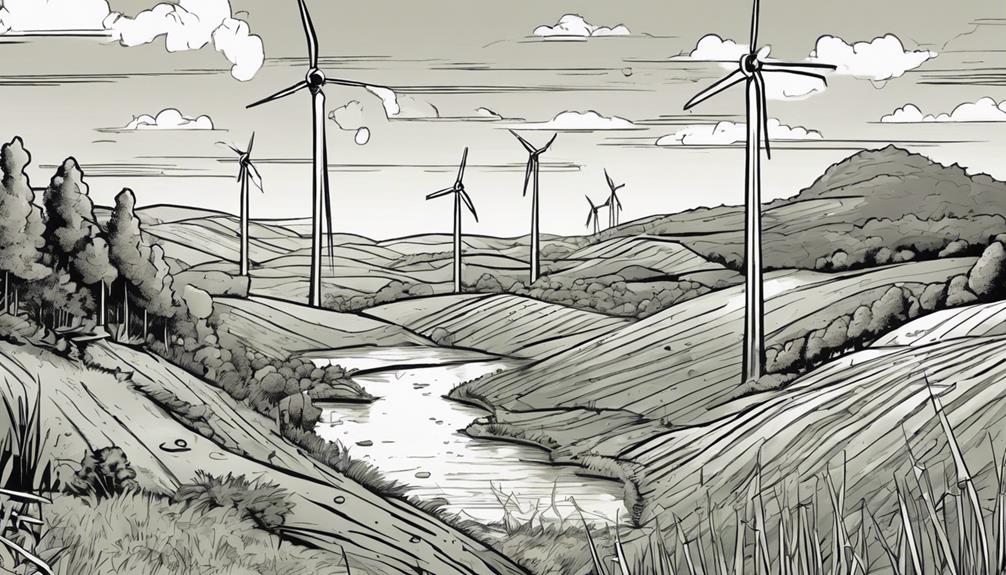
Consider local wind energy ordinances when planning wind turbine projects to guarantee compliance with regulations and minimize negative impacts on communities and the environment.
Wind energy ordinances, established by local governments, dictate critical aspects of wind energy projects, including noise levels, safety measures, and land use restrictions. These regulations are designed to ensure that wind turbine placement is done responsibly, taking into account the well-being of communities and the surrounding environment.
By adhering to these ordinances, developers can navigate the permitting process more effectively and address any concerns related to the construction and operation of wind turbines. Ultimately, wind energy ordinances play a pivotal role in mitigating potential issues and promoting sustainable wind energy development.
It's essential to familiarize yourself with these regulations and incorporate them into your project planning to create a harmonious balance between renewable energy generation and environmental stewardship.
Data Extraction and Analysis
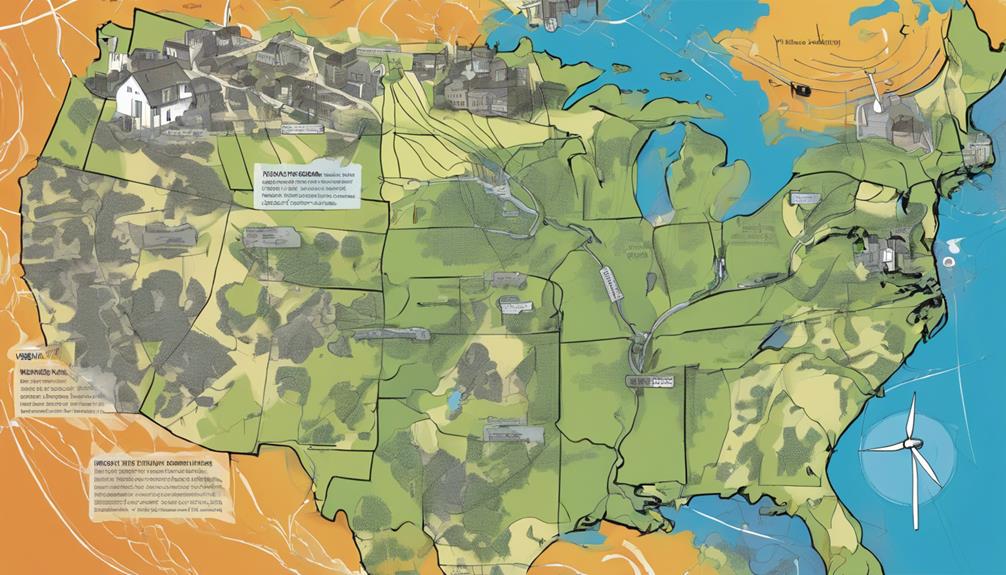
When delving into data extraction and analysis for wind turbine projects, integrating demographics, climatology, and spatial features datasets is essential.
To enhance wind farm location planning, consider the following:
- Utilize Advanced Tools: Tools like CARTO and H3 Spatial Index can aid in analyzing extracted data efficiently.
- Consider Vital Factors: Factors such as power availability and transport infrastructure play a pivotal role in determining the suitability of a site for wind turbines.
- Focus on Wind Speeds: Extracted data allows for detailed analysis of vital factors like wind speeds, helping in pinpointing best locations for wind turbine installation.
Frequently Asked Questions
What Factors Should Be Considered in Regards to Location When Building a Wind Turbine?
When building a wind turbine, consider wind resource potential, proximity to power lines, and environmental impact assessment. Goals include promoting community coexistence, minimizing wildlife impact, and engaging the public. Use wind energy maps and anemometer data for informed decisions.
What Are the Criteria for the Location of a Wind Turbine?
When deciding where to place a wind turbine, consider criteria like wind resource potential, proximity to power lines, and environmental impact assessments. Analysis of wind maps, permit acquisition, and adherence to wind energy ordinances are crucial.
What Factors Determine the Location and Placement of Wind Turbines for Optimal Energy Production?
To determine the best spot for wind turbines and maximize energy production, consider wind potential, power line access, environmental impact, permits, and community engagement. Use data, research, and regulations for responsible and effective placement.
What Are the Optimum Locations for Wind Turbines?
For peak energy production, place wind turbines in areas with consistent wind speeds between 15 to 55 miles per hour. Coastal regions and central U.S. locations are ideal. Taller towers above obstacles enhance efficiency. Combine wind and solar power for increased energy independence.
How Does the Number of Blades on a Wind Turbine Affect its Efficiency and Location?
The number of blades on a wind turbine can significantly impact its efficiency and location. Wind turbine blade efficiency design plays a crucial role in capturing wind energy. Turbines with fewer blades are more efficient in urban areas, while those with more blades are better suited for low wind speed locations.
Conclusion
Now that you've explored the factors to ponder when determining best wind turbine locations, you can envision a landscape dotted with sleek turbines harnessing the power of the wind.
By analyzing wind resource potential, existing infrastructure, and environmental impacts, you can pave the way for sustainable energy production.
So go forth and seek out those windy areas, navigate the permits and ordinances, and minimize wildlife interactions to bring clean, renewable energy to life.
